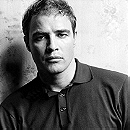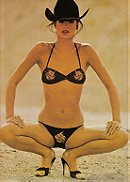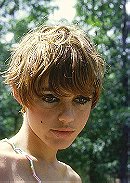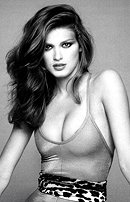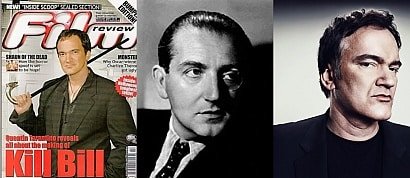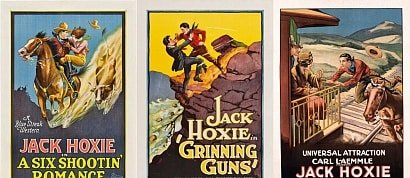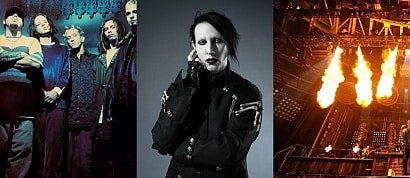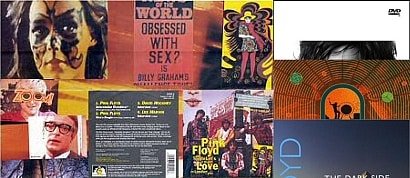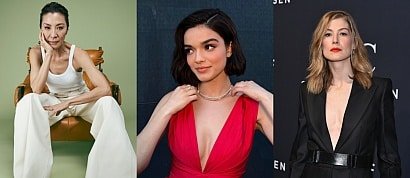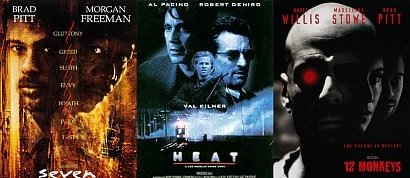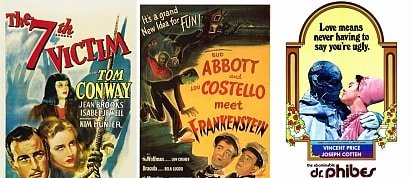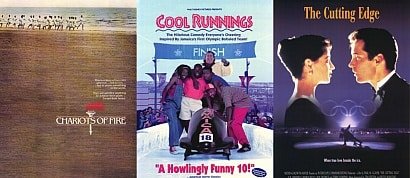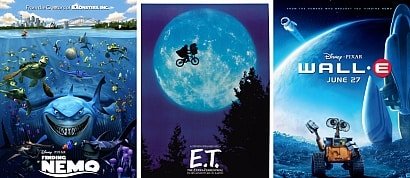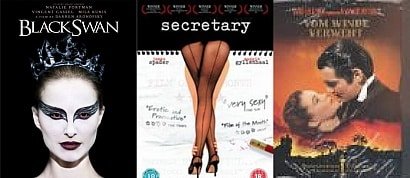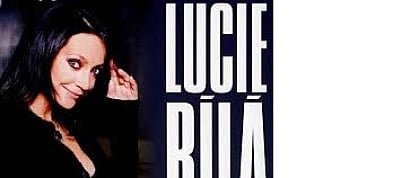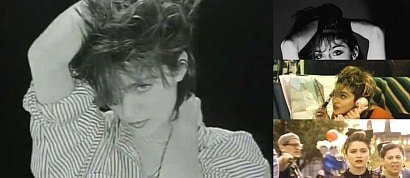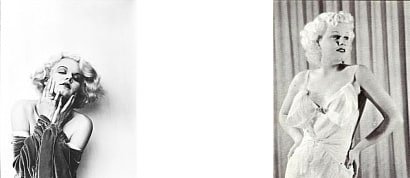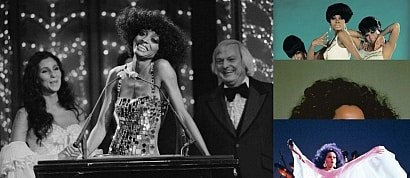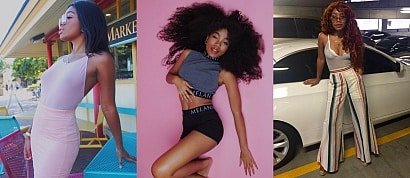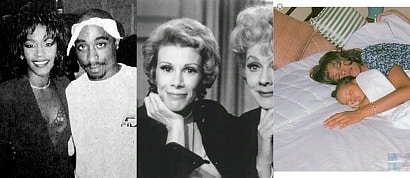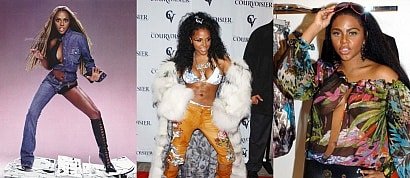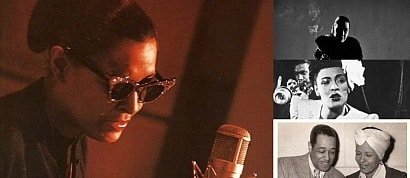I Moved to NYC to become a star!!
Sort by:
Showing 7 items
Rating:
List Type:
n 1978, she dropped out of college and relocated to New York City. She had little money and worked as a waitress at Dunkin' Donuts and with modern dance troupes. Madonna said of her move to New York, "It was the first time I'd ever taken a plane, the first time I'd ever gotten a taxi cab. I came here with $35 in my pocket. It was the bravest thing I'd ever done." She started to work as a backup dancer for other established artists. During a late night, Madonna was returning from a rehearsal, when she was dragged up an alleyway by a pair of men at knifepoint and forced to perform fellatio. Madonna characterized the attack as rape; she later commented that "the episode was a taste of my weakness, it showed me that I still could not save myself in spite of all the strong-girl show. I could never forget it." While performing as a dancer for the French disco artist Patrick Hernandez on his 1979 world tour, Madonna became romantically involved with musician Dan Gilroy. Together, they formed her first rock band, the Breakfast Club, for which Madonna sang and played drums and guitar. In 1980 or 1981 she left Breakfast Club and, with her former boyfriend Stephen Bray as drummer, formed the band Emmy. Their music impressed DJ and record producer Mark Kamins who arranged a meeting between Madonna and Sire Records founder Seymour Stein.
1982–85: Sire Records, Madonna, Like a Virgin and marriage to Sean Penn
After Madonna signed a singles deal with Sire, her debut single, "Everybody", was released on April 24, 1982, and became a dance hit. The rest is history


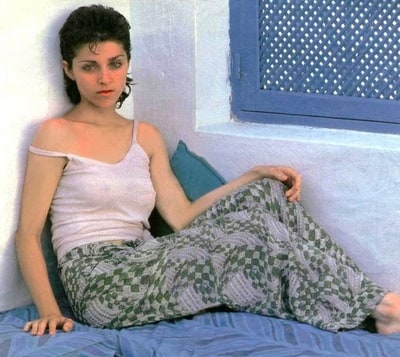
1982–85: Sire Records, Madonna, Like a Virgin and marriage to Sean Penn
After Madonna signed a singles deal with Sire, her debut single, "Everybody", was released on April 24, 1982, and became a dance hit. The rest is history



Khiarahana's rating:


In 1967, she left Glassboro State College (now Rowan University) and moved to New York City. She met photographer Robert Mapplethorpe there while working at a book store with a friend, poet Janet Hamill. She and Mapplethorpe had an intense romantic relationship, which was tumultuous as the pair struggled with times of poverty, and Mapplethorpe with his own sexuality. Smith considers Mapplethorpe to be one of the most important people in her life, and in her book Just Kids refers to him as "the artist of my life". Mapplethorpe's photographs of her became the covers for the Patti Smith Group LPs, and they remained friends until Mapplethorpe's death in 1989. In 1969 she went to Paris with her sister and started busking and doing performance art. When Smith returned to New York City, she lived in the Hotel Chelsea with Mapplethorpe; they frequented Max's Kansas City and CBGB. Smith provided the spoken word soundtrack for Sandy Daley's art film Robert Having His Nipple Pierced, starring Mapplethorpe. The same year Smith appeared with Wayne County in Jackie Curtis's play Femme Fatale. As a member of the St. Mark's Poetry Project, she spent the early 1970s painting, writing, and performing. In 1971 she performed – for one night only – in Cowboy Mouth, a play that she co-wrote with Sam Shepard. (The published play's notes call for "a man who looks like a coyote and a woman who looks like a crow".) She wrote several poems, "for sam shepard" and "Sam Shepard: 9 Random Years (7 + 2)" about her relationship with Shepard.
Smith was briefly considered for the lead singer position in Blue Öyster Cult. She contributed lyrics to several of the band's songs, including "Debbie Denise" (inspired by her poem "In Remembrance of Debbie Denise"), "Baby Ice Dog", "Career of Evil", "Fire of Unknown Origin", "The Revenge of Vera Gemini" (on which she performs duet vocals), and "Shooting Shark". She was romantically involved at the time with the band's keyboardist Allen Lanier. During these years, Smith also wrote rock journalism, some of which was published in Rolling Stone and Creem.



Smith was briefly considered for the lead singer position in Blue Öyster Cult. She contributed lyrics to several of the band's songs, including "Debbie Denise" (inspired by her poem "In Remembrance of Debbie Denise"), "Baby Ice Dog", "Career of Evil", "Fire of Unknown Origin", "The Revenge of Vera Gemini" (on which she performs duet vocals), and "Shooting Shark". She was romantically involved at the time with the band's keyboardist Allen Lanier. During these years, Smith also wrote rock journalism, some of which was published in Rolling Stone and Creem.



Khiarahana's rating:


Brando's sister decided to move to New York, Marlon soon followed. Brando used his Stanislavski System skills for his first summer-stock roles in Sayville, New York, on Long Island. His behavior got him kicked out of the cast of the New School's production in Sayville, but he was discovered in a locally produced play there and then made it to Broadway in the bittersweet drama I Remember Mama in 1944. Critics voted him "Broadway's Most Promising Actor" for his role as an anguished veteran in Truckline Café, although the play was a commercial failure. In 1946, he appeared on Broadway as the young hero in the political drama A Flag is Born, refusing to accept wages above the Actor's Equity rate because of his commitment to the cause of Israeli independence.In that same year, Brando played the role of Marchbanks with Katharine Cornell in her production's revival of Candida, one of her signature roles.[24] Cornell also cast him as The Messenger in her production of Jean Anouilh's Antigone that same year. Brando achieved stardom, however, as Stanley Kowalski in Tennessee Williams's 1947 play A Streetcar Named Desire, directed by Elia Kazan. Brando sought out that role, driving out to Provincetown, Massachusetts, where Williams was spending the summer, to audition for the part. Williams recalled that he opened the screen door and knew, instantly, that he had his Stanley Kowalski. Brando actually based his portrayal of Kowalski on the boxer Rocky Graziano, whom he studied at a local gymnasium. Graziano was unaware of who Brando was and it was not until Brando gave him tickets for the production that he realised - "The curtain went up and on the stage is that son of a bitch from the gym, and he's playing me."
In 1947, Brando was asked to do a screen test for Warner Brothers. The screen test used an early script for Rebel Without A Cause that bears no relation to the film eventually produced in 1955. The screen test appears as an extra in the 2006 DVD release of A Streetcar Named Desire.
Brando's first screen role was as the bitter paraplegic veteran in The Men in 1950. He spent a month in bed at the Birmingham Army Hospital in Van Nuys to prepare for the role. By Brando's own account, it may have been because of this film that his draft status was changed from 4-F to 1-A. He had had an operation on the knee he had injured at Shattuck, and it was no longer physically debilitating enough to incur exclusion from the draft. When Brando reported to the induction center, he answered a questionnaire provided to him by saying his race was "human", his color was "Seasonal-oyster white to beige", and he told an Army doctor that he was psycho neurotic. When the draft board referred him to a psychiatrist, Brando explained how he had been expelled from military school and that he had severe problems with authority. Coincidentally, the psychiatrist knew a doctor friend of Brando, and Brando was able to avoid military service during the Korean War.



In 1947, Brando was asked to do a screen test for Warner Brothers. The screen test used an early script for Rebel Without A Cause that bears no relation to the film eventually produced in 1955. The screen test appears as an extra in the 2006 DVD release of A Streetcar Named Desire.
Brando's first screen role was as the bitter paraplegic veteran in The Men in 1950. He spent a month in bed at the Birmingham Army Hospital in Van Nuys to prepare for the role. By Brando's own account, it may have been because of this film that his draft status was changed from 4-F to 1-A. He had had an operation on the knee he had injured at Shattuck, and it was no longer physically debilitating enough to incur exclusion from the draft. When Brando reported to the induction center, he answered a questionnaire provided to him by saying his race was "human", his color was "Seasonal-oyster white to beige", and he told an Army doctor that he was psycho neurotic. When the draft board referred him to a psychiatrist, Brando explained how he had been expelled from military school and that he had severe problems with authority. Coincidentally, the psychiatrist knew a doctor friend of Brando, and Brando was able to avoid military service during the Korean War.



In the early 1970s, Dickinson moved to New York City to pursue work as a model after winning a national competition called "Miss High Fashion Model." At a time when blue-eyed blondes dominated the fashion scene, Dickinson was turned down several times by modeling agents, including Eileen Ford, who informed Dickinson she was "much too ethnic. You'll never work." She was discovered by the fashion photographer Jacques Silberstein when his girlfriend, actress Lorraine Bracco, mentioned she liked Dickinson's look.Wilhelmina became Dickinson's first agent. Her modeling pursuits led her to Paris, France, where her "exotic looks" secured her reputation within the European fashion industry.
She returned to New York City in 1978, and spent the next several years working steadily, earning $2,000 per day, nearly four times the standard rate. Dickinson eventually signed with Ford Models to land a major ad campaign for a new JVC camera. Dickinson, who had not forgotten Ford's initial rejection, was intent on revenge. She soon became one of twenty Ford models to defect to John Casablancas's upstart Elite Model Management.
By the 1980s, Dickinson was considered a supermodel, as she "possessed the kind of name and face recognition" that the majority of women in the modeling industry strive to achieve. She appeared within and on covers of magazines including Harper's Bazaar, Cosmopolitan, Photo, Elégance, Vogue, Marie Claire, and Playboy, and worked with some of fashion's best-known names, including Bill Blass, Gianni Versace, Valentino, Azzedine Alaïa, Pino Lancetti, Halston, Oscar de la Renta and Calvin Klein. Dickinson has appeared on the cover of Vogue (both American and international editions) 37 times. She appeared on the cover of Elle seven times in a row and has been the face of ad campaigns for products including Revlon, Alberto VO5, Balmain, Obao, Christian Dior, Clairol, Hush Puppies, Jenny, Keiko Bathing Suits, Lou Taylor handbags, Max Factor, Virginia Slims, and Cutex.



She returned to New York City in 1978, and spent the next several years working steadily, earning $2,000 per day, nearly four times the standard rate. Dickinson eventually signed with Ford Models to land a major ad campaign for a new JVC camera. Dickinson, who had not forgotten Ford's initial rejection, was intent on revenge. She soon became one of twenty Ford models to defect to John Casablancas's upstart Elite Model Management.
By the 1980s, Dickinson was considered a supermodel, as she "possessed the kind of name and face recognition" that the majority of women in the modeling industry strive to achieve. She appeared within and on covers of magazines including Harper's Bazaar, Cosmopolitan, Photo, Elégance, Vogue, Marie Claire, and Playboy, and worked with some of fashion's best-known names, including Bill Blass, Gianni Versace, Valentino, Azzedine Alaïa, Pino Lancetti, Halston, Oscar de la Renta and Calvin Klein. Dickinson has appeared on the cover of Vogue (both American and international editions) 37 times. She appeared on the cover of Elle seven times in a row and has been the face of ad campaigns for products including Revlon, Alberto VO5, Balmain, Obao, Christian Dior, Clairol, Hush Puppies, Jenny, Keiko Bathing Suits, Lou Taylor handbags, Max Factor, Virginia Slims, and Cutex.



Khiarahana's rating:


After attending Dwight Morrow High School, Travolta moved across the Hudson River to New York City and landed a role in the touring company of the musical Grease and on Broadway in Over Here!, singing the Sherman Brothers' song "Dream Drummin'". He then moved to Los Angeles to further his career in show business. Travolta as Vinnie Barbarino in the ABC comedy Welcome Back Kotter, c. 1976
Travolta's first California-filmed television role was as a fall victim in, Emergency! (S2E2), in September 1972, but his first significant movie role was as Billy Nolan, a bully who was goaded into playing a prank on Sissy Spacek's character in the horror film, Carrie (1976). Around the same time, he landed his star-making role as Vinnie Barbarino in the TV sitcom Welcome Back, Kotter (1975–1979), in which his sister, Ellen, also occasionally appeared (as Arnold Horshack's mother). The show aired on ABC.
1970s stardom Travolta had a hit single entitled "Let Her In", peaking at number ten on the Billboard Hot 100 chart in July 1976. In the next few years, he appeared in two of his most noted screen roles: Tony Manero in Saturday Night Fever (1977) and as Danny Zuko in Grease (1978). The films were among the most commercially successful pictures of the decade and catapulted Travolta to international stardom. Saturday Night Fever earned him an Academy Award nomination for Best Actor. At age 24, Travolta became one of the youngest performers ever nominated for the Best Actor Oscar. His mother and his sister Ann appeared as extras in Saturday Night Fever and his sister Ellen appeared as a waitress in Grease. Travolta performed several of the songs on the Grease soundtrack album. In 1980, Travolta inspired a nationwide country music craze that followed on the heels of his hit film, Urban Cowboy, in which he starred with Debra Winger.



Travolta's first California-filmed television role was as a fall victim in, Emergency! (S2E2), in September 1972, but his first significant movie role was as Billy Nolan, a bully who was goaded into playing a prank on Sissy Spacek's character in the horror film, Carrie (1976). Around the same time, he landed his star-making role as Vinnie Barbarino in the TV sitcom Welcome Back, Kotter (1975–1979), in which his sister, Ellen, also occasionally appeared (as Arnold Horshack's mother). The show aired on ABC.
1970s stardom Travolta had a hit single entitled "Let Her In", peaking at number ten on the Billboard Hot 100 chart in July 1976. In the next few years, he appeared in two of his most noted screen roles: Tony Manero in Saturday Night Fever (1977) and as Danny Zuko in Grease (1978). The films were among the most commercially successful pictures of the decade and catapulted Travolta to international stardom. Saturday Night Fever earned him an Academy Award nomination for Best Actor. At age 24, Travolta became one of the youngest performers ever nominated for the Best Actor Oscar. His mother and his sister Ann appeared as extras in Saturday Night Fever and his sister Ellen appeared as a waitress in Grease. Travolta performed several of the songs on the Grease soundtrack album. In 1980, Travolta inspired a nationwide country music craze that followed on the heels of his hit film, Urban Cowboy, in which he starred with Debra Winger.



Shortly after Bobby's death, Sedgwick was herself injured in a car accident in California, in which she suffered a broken knee. She was afraid that her father might use this as a reason to have her sent back into psychiatric care, so with her mother's help she surreptitiously left California and returned to New York. In March 1965, Sedgwick met artist and avant-garde filmmaker Andy Warhol at Lester Persky's apartment. She began going to The Factory regularly in March 1965 with her friend, Chuck Wein. During one of those visits, Warhol was filming Vinyl, his interpretation of the novel A Clockwork Orange. Despite Vinyl's all-male cast, Warhol put Sedgwick in the movie. She also made a small cameo appearance in another Warhol film, Horse, when she entered towards the end of the film. Although Sedgwick's appearances in both films were brief, they generated so much interest that Warhol decided to create a vehicle in which she could star.
The first of those films, Poor Little Rich Girl, was originally conceived as part of a series featuring Sedgwick, called The Poor Little Rich Girl Saga. The series was to include Poor Little Rich Girl, Restaurant, Face and Afternoon. Filming of Poor Little Rich Girl started in March 1965 in Sedgwick's apartment. The first reel shows Sedgwick waking up, ordering coffee and orange juice, and putting on her makeup in silence with only an Everly Brothers record playing. Due to a problem with the camera lens, the footage on the first reel is completely out of focus. The second reel consists of Sedgwick smoking cigarettes, talking on the telephone, trying on clothes, and describing how she had spent her entire inheritance in six months.



The first of those films, Poor Little Rich Girl, was originally conceived as part of a series featuring Sedgwick, called The Poor Little Rich Girl Saga. The series was to include Poor Little Rich Girl, Restaurant, Face and Afternoon. Filming of Poor Little Rich Girl started in March 1965 in Sedgwick's apartment. The first reel shows Sedgwick waking up, ordering coffee and orange juice, and putting on her makeup in silence with only an Everly Brothers record playing. Due to a problem with the camera lens, the footage on the first reel is completely out of focus. The second reel consists of Sedgwick smoking cigarettes, talking on the telephone, trying on clothes, and describing how she had spent her entire inheritance in six months.



Carangi was most known in modeling circles by only her first name. After being featured in Philadelphia newspaper ads, Carangi moved to New York City at the age of 17, where she quickly rose to prominence. She was a favorite model of various fashion photographers, including Francesco Scavullo, Arthur Elgort, Joseph Petrellis, Richard Avedon, Denis Piel, Marco Glaviano, and Chris von Wangenheim. Well-integrated within the fashion world, Carangi had the selection of several photographers, most notably Scavullo. By the end of 1978, Carangi was already a well-established model. In an interview with 20/20, Carangi noted that, "I started working with very good people...I mean all the time, very fast. I didn’t build into a model, I just sort of became one."GIA WAS doing Bloomingdale’s ads and Vogue layouts with Arthur Elgort, Italian Bazaar editorial spreads in Rome with Chris von Wangenheim and Cosmo covers with Scavullo. Her makeup was being done by the two best in the business, Sandy Linter and Way Bandy, and her hair stylist was invariably the legendary Harry King. It happened so fast that she didn’t have time to be awed. She was being booked by the top photographers and modeling the work of the top fashion designers before she really even knew who they were or how to spell their names: Her datebooks were filled with references to "Norman Kamali" and "Scovollo" next to the endless lists of reminders she always wrote to herself."I was mad about her," recalls Scavullo. "She wasn’t stylized, she didn’t pose. She was like an actress in front of the camera: You got a million pictures that had her head in them. She had her own little way of modeling. She jumped around. Gia would later tell an interviewer that she was initially scared of New York. "It seemed so huge compared to Philadelphia," she said. "And I had to take a lot of taxis and I didn’t know how to hail them. It was really kind of freaky."






Khiarahana's rating:


These are the only people I could think of, If anyone has any other suggestions I'd really appreciate it.
Added to
People who voted for this also voted for
Cool people that like Dark Shadows
Western Movie Posters: Jack Hoxie
The Best Songs
Movies with Music by Pink Floyd
Golden Globe Best Actress in a Film Comedy
Top films of 1995
Sevilla F. C.
I'm just in love with this voice
CFB 100 Essential Horror Films
MPB Pop Art
Olympics
Favorite Kids & Family Films
Movie/Series collection
Czech music artist
Mayer M Flaks
You're so cool:Madonna
Lil' Blonde Darling:Jean Harlow
The Original Diva Of Pop:Diana Ross
InstaStyle:Domyenn
Pictures from heaven
Lil' Kim:La Bella Mafia
Lady Day
 Login
Login
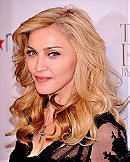
 6.2
6.2
 0
0

